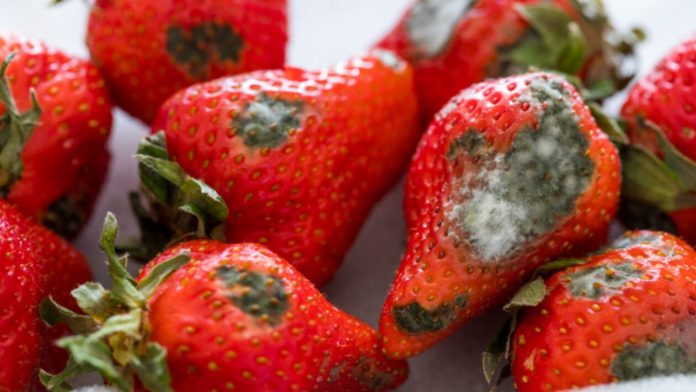Is mold on food cause for panic? Find out which products can be saved and which should go in the trash, what are the effects of mold and how to effectively prevent it.Read practical tips to help you store food safely and avoid unnecessary health risks..
Food mold is a problem that many of us deal with on a daily basis.Although we often tend to throw away products with traces of mold, it is worth considering whether this is always necessary.Are all types of mold dangerous? Is it safe to eat food after removing the infected part? In this article, we’ll debunk the facts and myths about food mold so you can make informed decisions in the kitchen.
What is mold?
Mold is a type of fungus that grows in the form of multicellular filaments.It is a saprophytic organism, meaning it thrives on dead organic matter such as food.Molds are spread through spores that are airborne and can settle on food, promoting its decomposition.Although some molds are used in food production, many of them can be harmful to health if consumed in excess.
Facts and myths about food mold
Mold on food raises many questions, so it is useful to distinguish between facts and myths.One popular myth is the belief that removing visible mold makes food safe – it is not true because mold can penetrate deeper and invisibly contaminate the product.Another myth is the belief that all types of mold are harmful.In fact, some molds, such as moldy cheeses, are harmless and even desirable.However, the fact is that some molds produce toxins, such as mycotoxins, which are dangerous to health, so it is necessary to be careful when eating infected food.
Is it okay to eat food with mold?
Eating food with mold is not always safe.In the case of hard cheeses, vegetables and fruits with a thick skin, it may be enough to remove the mold along with the edge of the clean part.However, with soft foods such as bread, jams or soft cheeses, the mold can penetrate deeper and contaminate the whole food.In such cases it is best to dispose of the infested product to avoid the risk of ingesting toxins, such as the previously mentioned mycotoxins, which are harmful to health.
Molds and fermented foods
Certain molds play a key role in the production of safe and tasty fermented foods.Examples are mold cheeses such as roquefort, gorgonzola and brie , which get their characteristic taste thanks to the fungi Penicillium roqueforti and Penicillium camemberti.Another example is the fermentation of cured meats, such as salami , where molds form a protective layer and affect ripening and flavor.In the case of soy sauce , Aspergillus oryzae is often added to the fermentation process to give it a deep umami flavor.
It is interesting that the molds used in the production of mold cheeses are such a valuable and unique raw material that some of them are legally protected as regional products, e.g.Hogwarts must be made in France.However, it should be remembered that molds that spontaneously develop on food stored at home are harmful and should not be consumed..
How do you recognize harmful molds?
Harmful molds are often green, black, or white in color and may emit an unpleasant odor.Examples of harmful molds are Aspergillus, Penicillium and Stachybotrys, which produce toxic substances such as the mycotoxins mentioned above.If you notice mold on food that looks or smells suspicious, it is best to throw away the entire infected product or food to avoid the risk of poisoning and other health problems..
Health effects of mold ingestion
Eating mold can have different health effects depending on the type of mold and the amount of food consumed.Some molds produce mycotoxins, which are harmful to the body and can lead to food poisoning, liver damage, kidney damage and even an increased risk of cancer.Symptoms of mold poisoning can include abdominal pain, nausea, vomiting, diarrhea, and allergic reactions such as a rash or difficulty breathing.In rare cases, molds can lead to respiratory infections, especially in people with weakened immune systems.For this reason, it is important to avoid consuming products with visible signs of mold to avoid possible health risks.
How to prevent the formation of mold on food?
To prevent mold on food, proper food storage is key. Keep food in a dry and cool place, preferably in the refrigerator, which slows the growth of mold.Keep fruits and vegetables in separate containers so they don’t spoil faster.Use airtight containers for loose products such as flour and semolina.Regularly check your stock and remove spoiled food to prevent mold from spreading to other products.
Fun facts about molds
Fungi played a key role in the history of medicine when Alexander Fleming discovered penicillin, the first antibiotic, in 1928.Fleming noticed that the mold Penicillium notatum suppressed the growth of bacteria in his Petri dishes, revolutionizing the treatment of bacterial infections and saving millions of lives.This discovery paved the way for the development of modern antibiotics, which are still produced on the basis of various strains of fungi. .
However, it should be emphasized again that molds that appear on food in the home environment are completely different and dangerous.Eating moldy food from the household is always a risk and should be avoided.
Food mold is a common problem that poses a serious health risk.Although some types of mold are safe, most should be cause for concern.Eating food with mold can have serious health consequences, such as poisoning or allergic reactions.Therefore, it is important to know how to recognize and avoid mold, as well as how to properly store food to prevent mold growth.Thanks to these simple rules, we can protect our health and enjoy fresh products every day.


